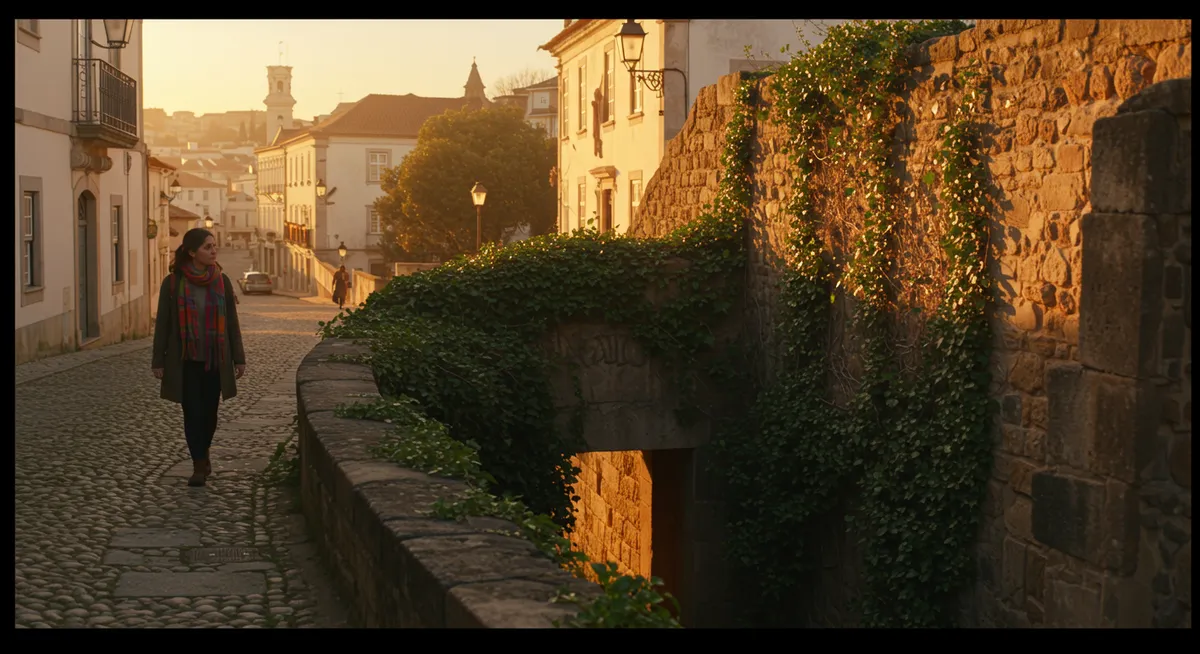
Hidden Historical Sites to Explore Coimbra
Want to plan a trip based on this article? Chat with our AI travel assistant!
Chat with AI AssistantCategory: hidden-historical-sites-to-explore-coimbra
About the Author
Travel Expert & Content Creator
Our travel experts have visited hundreds of destinations worldwide and are passionate about sharing authentic, practical travel advice. With years of experience in travel planning and content creation, we help travelers make informed decisions and create unforgettable journeys.
Editorial Standards: All articles are reviewed for accuracy and quality before publication. Learn more about our editorial process.
Written by Editor | Last updated: 8/8/2025
Unearthing Coimbra's Secret Past: Hidden Historical Sites Await
Having explored Portugal extensively, I've always found Coimbra to be a city of profound historical depth, far beyond its iconic university. While many visitors flock to the Biblioteca Joanina, the true magic often lies in discovering its lesser-known corners. This guide delves into the hidden historical sites to explore Coimbra, uncovering ancient secrets and fascinating stories that truly define this vibrant Portuguese city. Prepare to step off the well-trodden path and immerse yourself in Coimbra's rich, layered past.
Unearthing Roman Coimbra: The Cryptoporticus of Aeminium
While Coimbra is renowned for its medieval and academic heritage, its Roman roots are equally captivating, though often unseen. The Cryptoporticus of Aeminium is a prime example, a subterranean marvel that once supported the Roman forum. This intricate system of vaulted galleries and corridors, now beneath the Machado de Castro National Museum, served a vital architectural and functional role. Exploring these ancient passages offers a unique glimpse into the city's foundation as Aeminium. I remember feeling a profound sense of connection to history walking through these cool, echoing chambers, realizing just how much lies beneath modern Coimbra. For anyone fascinated by Roman engineering and hidden histories, this site is a must-see, offering a quiet, reflective counterpoint to the bustling city above.
The Submerged Stories of Santa Clara-a-Velha Monastery
Beyond the grandeur of the University, one of the most compelling hidden historical sites to explore Coimbra is the Monastery of Santa Clara-a-Velha. This 13th-century Gothic monastery, founded by Queen Saint Isabel, suffered repeated flooding from the Mondego River, eventually leading to its abandonment. Today, excavated and preserved, visitors can walk through its partially submerged ruins, with glass walkways offering views of the original floor plan beneath. It's a poignant testament to the resilience of history against nature. My personal experience here was incredibly moving, seeing the high-water marks and imagining the lives of the nuns who lived with such challenges. For more on what to do in the city, check out our guide on things to do in Coimbra, but don't miss this unique monastery.
Beyond the Walls: Coimbra's Lesser-Known Churches and Chapels
While the Sé Velha and Sé Nova dominate the ecclesiastical landscape, Coimbra boasts numerous smaller, equally significant churches that often escape the main tourist radar. Consider the discreet Igreja de Santa Justa, a charming Baroque church with a beautiful interior, or the little Chapel of Nossa Senhora da Vitória, tucked away in an alley. These quiet sanctuaries offer a more intimate experience of Coimbra's spiritual and architectural evolution. They represent Coimbra's secret history, often housing exquisite azulejos or unique altarpieces. I find that strolling into these smaller chapels provides an authentic, serene escape, revealing layers of local artistry and devotion. It's truly a journey into the soul of old Coimbra, away from the crowds.
Wandering Through Time: Coimbra's Historic Alleys and Courtyards
Sometimes, the most significant historical discoveries aren't grand monuments but the very fabric of a city's oldest districts. Coimbra's Alta (upper town) and Baixa (lower town) are crisscrossed by labyrinthine alleys and hidden courtyards, each whispering tales of centuries past. Areas like Quebra Costas or the alleys near Rua da Sofia, though not always listed as specific sites, are living museums. Exploring these narrow passages, you might stumble upon ancient archways, medieval house facades, or even vestiges of the old city walls. This is where Coimbra's hidden gems truly reveal themselves. My best tip is to simply get lost; you'll uncover unexpected historical details and authentic local life around every corner. It's a fantastic way to extend your Coimbra sightseeing itinerary.
Navigating Coimbra's Hidden Past: Essential Exploration Tips
To fully appreciate these hidden historical sites to explore Coimbra, a bit of strategic planning goes a long way. Wear comfortable shoes, as many of these spots involve steep climbs and uneven cobblestones typical of ancient European cities. Consider visiting during the shoulder seasons to avoid peak crowds, as detailed in our best time to visit Coimbra guide. Don't hesitate to ask locals for directions or lesser-known recommendations; their insights can lead to incredible discoveries. Many sites have limited hours, so check opening times in advance. Embrace the adventure of discovery; Coimbra rewards those who venture beyond the obvious, revealing a truly rich and profound historical narrative that resonates deeply.
Frequently Asked Questions
What is the best way to find Coimbra's hidden historical sites?
Are these hidden sites accessible to all visitors?
Can I explore these hidden gems on a short visit to Coimbra?
Coimbra, often seen as Portugal's academic heart, truly comes alive when you venture beyond its most famous landmarks. The hidden historical sites to explore Coimbra offer a profound connection to its multifaceted past, from Roman foundations to submerged medieval monasteries. These lesser-known treasures provide a richer, more intimate understanding of the city's enduring spirit and resilience. By seeking out these secret corners, you're not just visiting a destination; you're embarking on a journey through centuries of Portuguese history. For more insightful travel guides and tips on exploring Portugal and beyond, be sure to visit the Tourspilot blog for your next adventure.
Content Quality Assurance
This article has been thoroughly researched and fact-checked by our editorial team. We maintain high standards for accuracy and originality in all our content.
Related Articles

Hidden Gems to Explore in Sintra Portugal
Discover hidden gems to explore in Sintra Portugal, from serene gardens to lesser-known palaces, for an unforgettable trip away from the crowds.

Évora's Hidden Gems: Local Experiences in Portugal
Discover Évora's hidden gems and authentic local experiences in Portugal. Uncover secret spots, traditional flavors, and unique cultural insights for your 2024 trip.

Hidden Gem Attractions in Braga for Tourists
Hidden gem attractions in Braga offer unique experiences for tourists. Discover Braga's secret spots, from ancient chapels to serene gardens, in 2024.